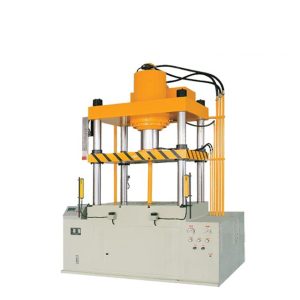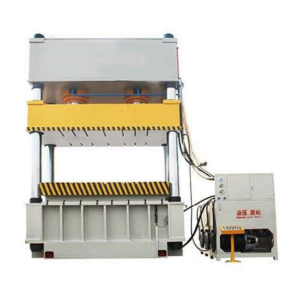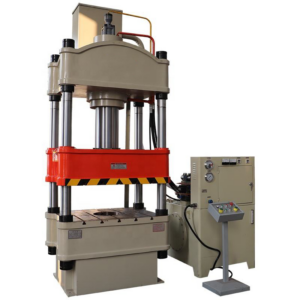Hydraulic presses are known for their incredible strength, even though they are often compact in size. Their immense power comes from the application of Pascal’s Law and the principles of fluid dynamics and energy conservation. Understanding how these principles work explains why a small hydraulic press can generate such enormous force.

The Science Behind Hydraulic Power
The hydraulic booster cylinder at the heart of a hydraulic press amplifies pressure. It uses pistons and shafts of different sizes. This design directly applies Pascal’s Law of Energy Conservation. According to the law, when pressure is applied to an enclosed fluid, it transmits evenly throughout the fluid. A small piston generates a low-pressure zone. The press then moves high-pressure oil to a larger piston, which creates the force needed for pressing operations.
The amplification happens when hydraulic oil compresses based on the ratio of the pistons’ cross-sectional areas. In simple terms, the smaller piston generates low pressure. When the pressure moves to the larger piston, the pressure increases. This increase can be dozens of times greater, depending on the area ratio. The system then directs high-pressure oil to the pre-pressurization section of the cylinder. There, it generates the force that powers the press.
Hydraulic Press Operation
The hydraulic press operates in a series of interconnected stages. First, the intake ports (P1/P2) remain open. The booster cylinder stays in a return state. Next, the system activates intake at P4 and exhaust at P1. This causes the front axle to drop and completes the pre-pressing action. Afterward, the system activates intake at P3 and exhaust at P2. The booster piston drops, increasing the pressure and amplifying the force. Finally, when the system activates intake at P1/P2, the booster piston and front axle return to their starting positions. This completes the pressing cycle.
This sequence shows how the hydraulic system turns low pressure into high pressure by adjusting piston areas. The area ratio is crucial because it governs how the system amplifies the force. Each action builds upon the previous one. Together, they create the immense pressure needed for the press to perform.
Why Hydraulic Presses Are Powerful
Hydraulic presses derive their power from two factors: the area of the press cylinder and the pressure exerted by the hydraulic system. For example, if the hydraulic system operates at 30 MPa (megapascals) and the cylinder has a diameter of 32 cm, the press calculates the piston area. It then multiplies this by the system pressure to determine the total pressing force. Naturally, the larger the cylinder area, the greater the force the press can apply.
The true power of a hydraulic press comes from the amplification effect. As pressure moves through the hydraulic fluid, the force applied to the material being pressed increases significantly compared to the initial force. This amplification lets hydraulic presses perform heavy-duty tasks like metal forging, molding, and other industrial operations with ease and precision.



